Abstract
The mechanisms involving inactivation of bacteriophage MS2 in aerosols and the effect of protective substances in the spray-medium were studied after spraying from various NaCl solutions. Results with aerosols generated from the salt solutions showed that with higher salt concentration in the spray-medium higher concentrations of protective substances were needed to protect phage MS2 against aerosol inactivation. Phenylalanine, which has a protective action at low concentration, produced less protection in aerosol droplets that were supersaturated solutions of this substance or in which crystals of phenylalanine can be expected to form. Our results suggested that protection by peptone and phenylalanine was related to the concentration in the aerosol droplet after evaporation to equilibrium, whereas protection by the surface active agent OED (a commercial mixture of oxyethylene docosylether and oxyethelene octadecylether) was related to the concentration at which a monolayer is formed around the aerosol particle. Inactivation of phage MS2 was maximal in the aerosol particle in fluid phase and became less at lower relative humidity where aerosol particles are expected to be in the solid state. It is suggested that inactivation of bacteriophage MS2 in aerosols could be explained by surface inactivation at the air-water interface.
Full text
PDF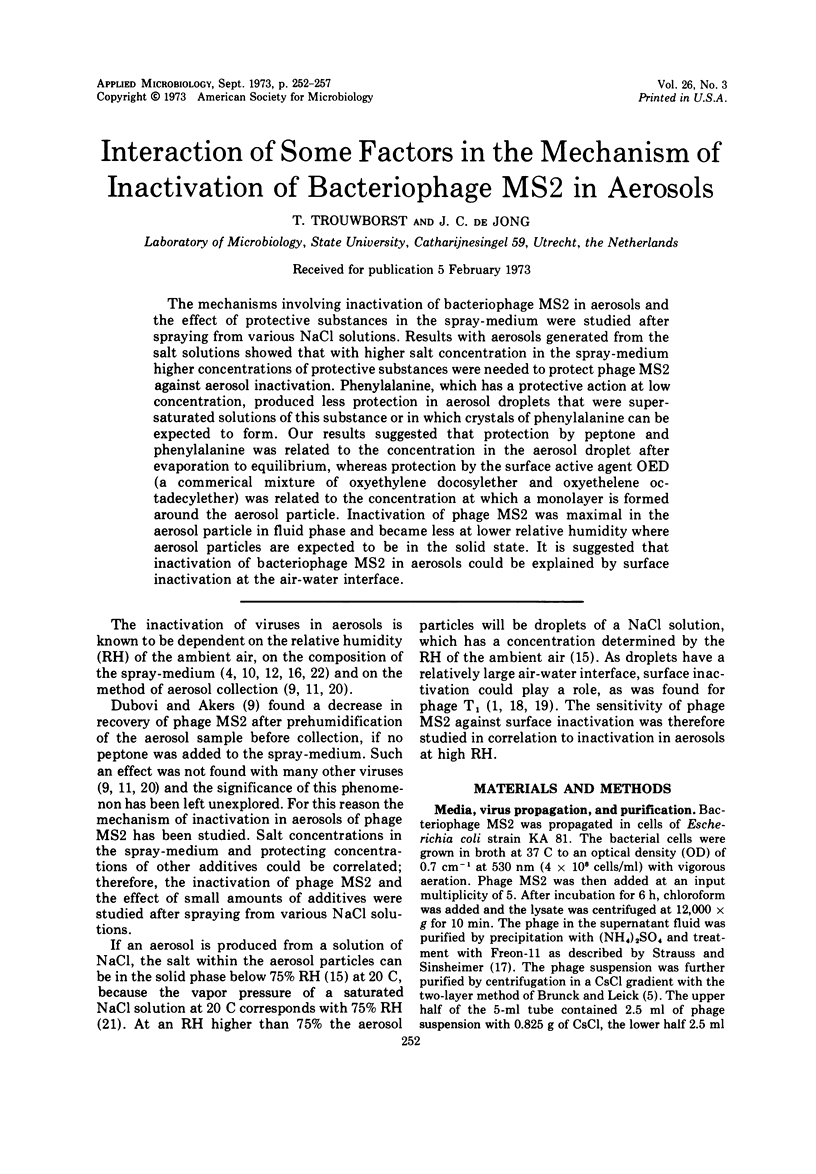
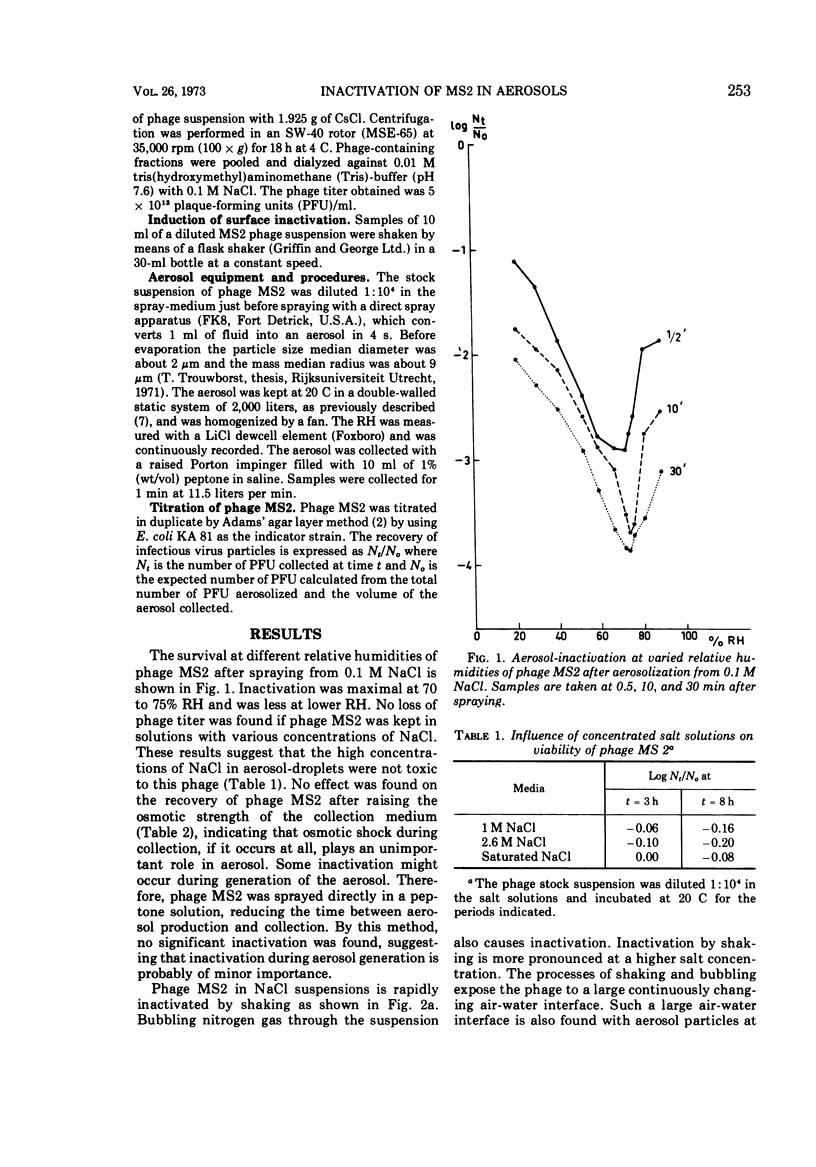
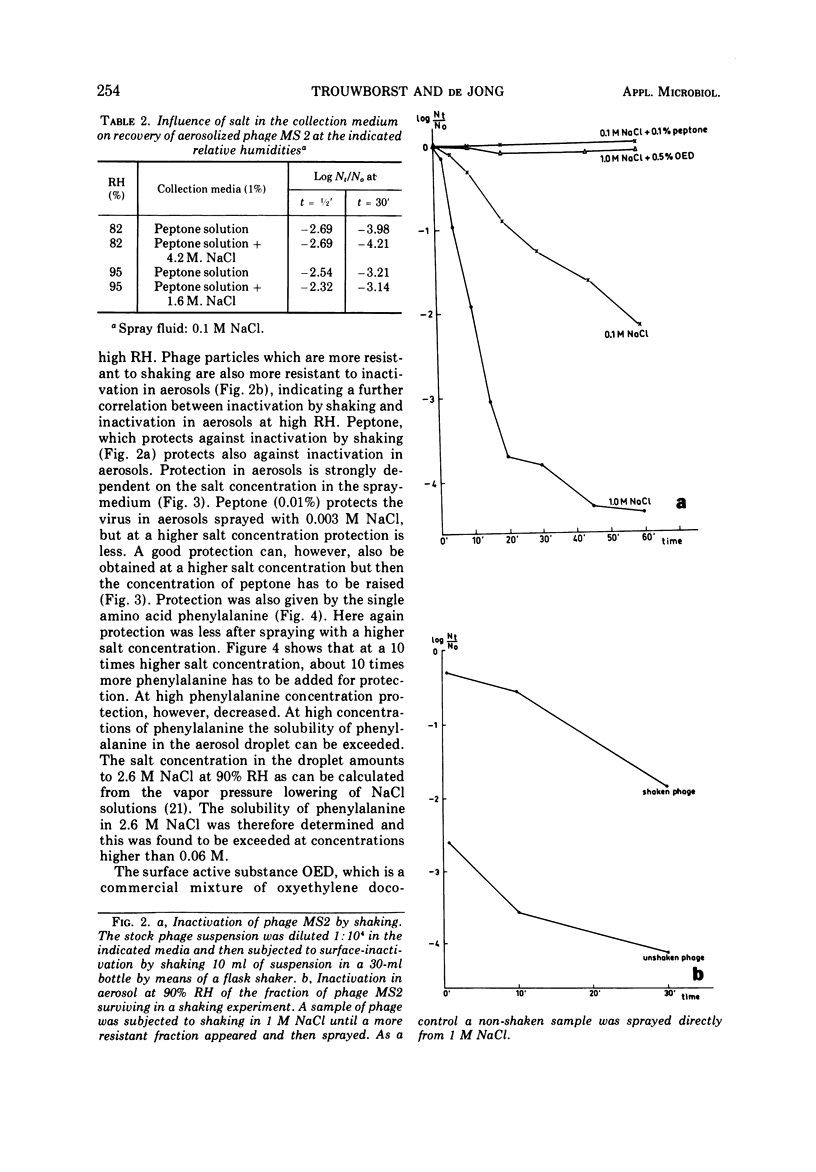
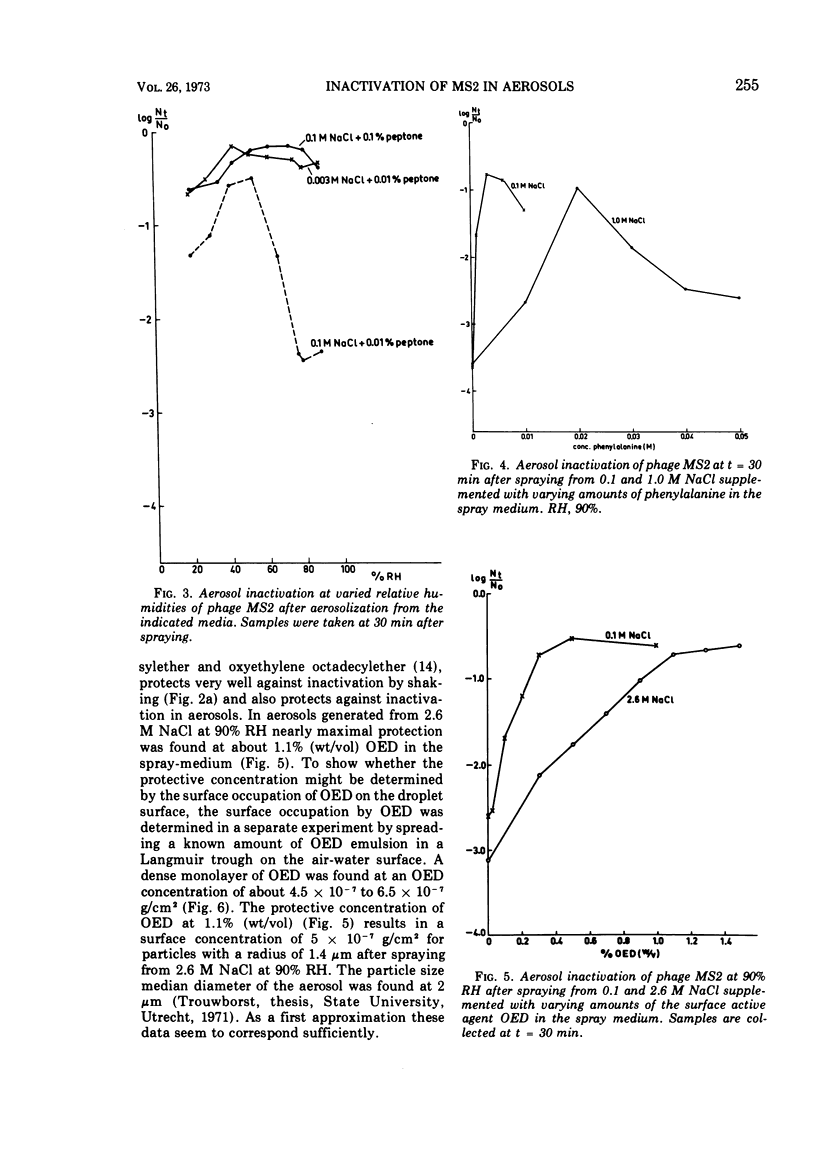
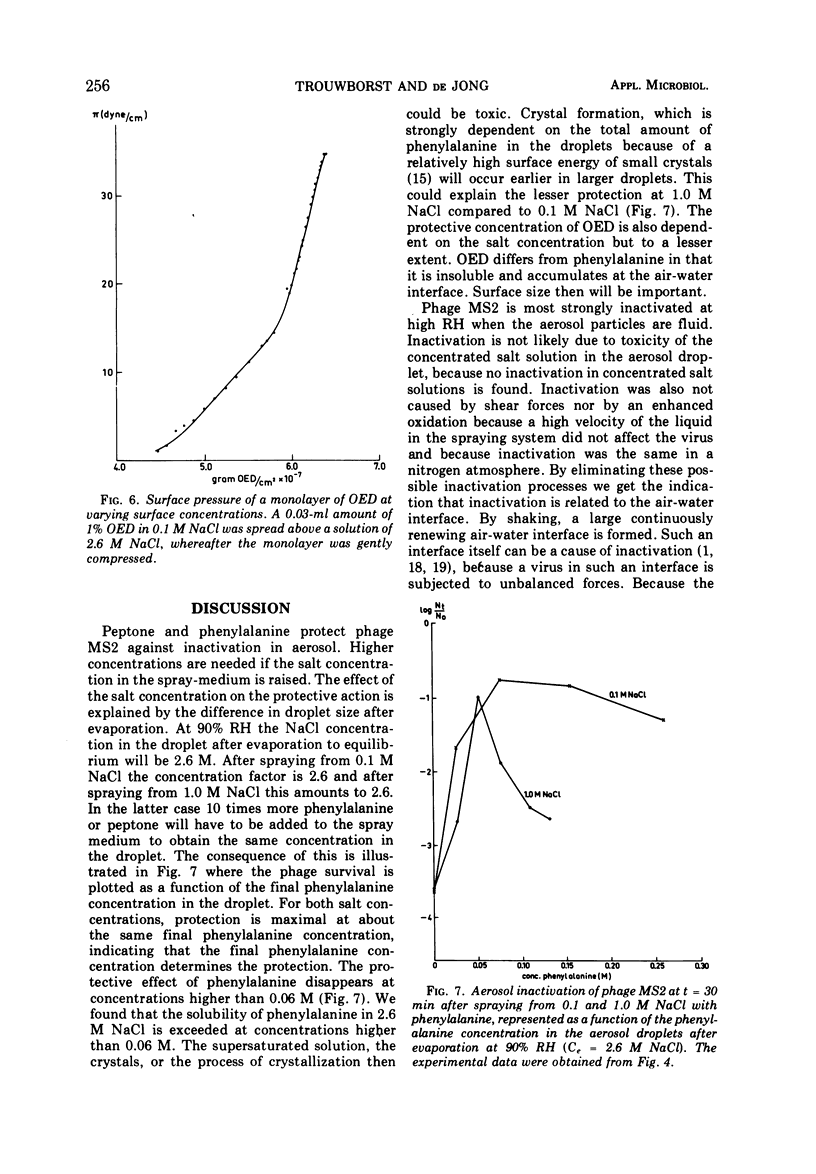
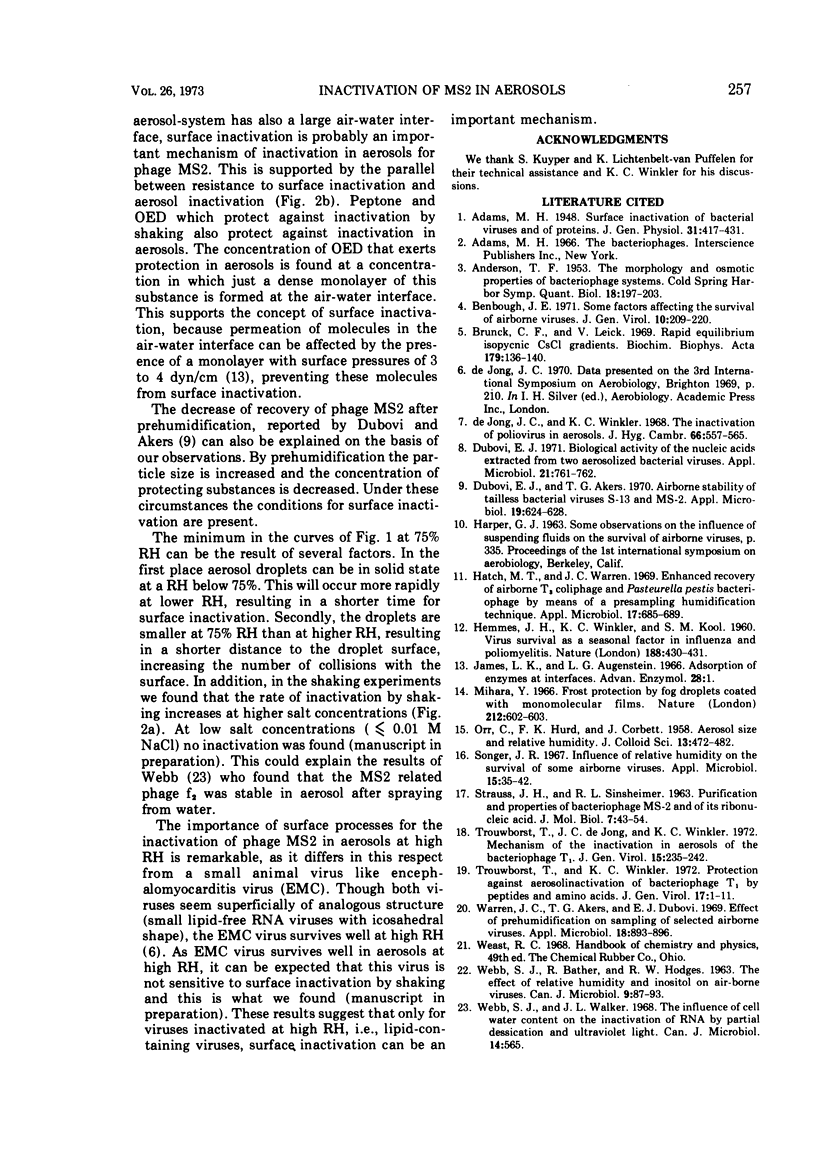
Selected References
These references are in PubMed. This may not be the complete list of references from this article.
- ANDERSON T. F. The morphology and osmotic properties of bacteriophage systems. Cold Spring Harb Symp Quant Biol. 1953;18:197–203. doi: 10.1101/sqb.1953.018.01.030. [DOI] [PubMed] [Google Scholar]
- Benbough J. E. Some factors affecting the survival of airborne viruses. J Gen Virol. 1971 Mar;10(3):209–220. doi: 10.1099/0022-1317-10-3-209. [DOI] [PubMed] [Google Scholar]
- Brunk C. F., Leick V. Rapid equilibrium isopycnic CsC1 gradients. Biochim Biophys Acta. 1969 Mar 18;179(1):136–144. doi: 10.1016/0005-2787(69)90129-4. [DOI] [PubMed] [Google Scholar]
- Dubovi E. J., Akers T. G. Airborne stability of tailless bacterial viruses S-13 and MS-2. Appl Microbiol. 1970 Apr;19(4):624–628. doi: 10.1128/am.19.4.624-628.1970. [DOI] [PMC free article] [PubMed] [Google Scholar]
- Dubovi E. J. Biological activity of the nucleic acids extracted from two aerosolized bacterial viruses. Appl Microbiol. 1971 Apr;21(4):761–762. doi: 10.1128/am.21.4.761-762.1971. [DOI] [PMC free article] [PubMed] [Google Scholar]
- HEMMES J. H., WINKLER K. C., KOOL S. M. Virus survival as a seasonal factor in influenza and polimyelitis. Nature. 1960 Oct 29;188:430–431. doi: 10.1038/188430a0. [DOI] [PubMed] [Google Scholar]
- Hatch M. T., Warren J. C. Enhanced recovery of airborne T3 coliphage and Pasteurella pestis bacteriophage by means of a presampling humidification technique. Appl Microbiol. 1969 May;17(5):685–689. doi: 10.1128/am.17.5.685-689.1969. [DOI] [PMC free article] [PubMed] [Google Scholar]
- James L. K., Augenstein L. G. Adsorption of enzymes at interfaces: film formation and the effect on activity. Adv Enzymol Relat Areas Mol Biol. 1966;28:1–40. doi: 10.1002/9780470122730.ch1. [DOI] [PubMed] [Google Scholar]
- STRAUSS J. H., Jr, SINSHEIMER R. L. Purification and properties of bacteriophage MS2 and of its ribonucleic acid. J Mol Biol. 1963 Jul;7:43–54. doi: 10.1016/s0022-2836(63)80017-0. [DOI] [PubMed] [Google Scholar]
- Songer J. R. Influence of relative humidity on the survival of some airborne viruses. Appl Microbiol. 1967 Jan;15(1):35–42. doi: 10.1128/am.15.1.35-42.1967. [DOI] [PMC free article] [PubMed] [Google Scholar]
- Trouwborst T., Winkler K. C. Protection against aerosol-inactivation of bacteriophage T 1 by peptides and amino acids. J Gen Virol. 1972 Oct;17(1):1–11. doi: 10.1099/0022-1317-17-1-1. [DOI] [PubMed] [Google Scholar]
- Trouwborst T., de Jong J. C., Winkler K. C. Mechanism of inactivation in aerosols of bacteriophage T 1 . J Gen Virol. 1972 Jun;15(3):235–242. doi: 10.1099/0022-1317-15-3-235. [DOI] [PubMed] [Google Scholar]
- Warren J. C., Akers T. G., Dubovi E. J. Effect of prehumidification on sampling of selected airborne viruses. Appl Microbiol. 1969 Nov;18(5):893–896. doi: 10.1128/am.18.5.893-896.1969. [DOI] [PMC free article] [PubMed] [Google Scholar]
- Webb S. J., Walker J. L. The influence of cell water content on the inactivation of RNA by partial desiccation and ultraviolet light. Can J Microbiol. 1968 May;14(5):565–572. doi: 10.1139/m68-095. [DOI] [PubMed] [Google Scholar]
- de Jong J. C., Winkler K. C. The inactivation of poliovirus in aerosols. J Hyg (Lond) 1968 Dec;66(4):557–565. doi: 10.1017/s0022172400028308. [DOI] [PMC free article] [PubMed] [Google Scholar]


